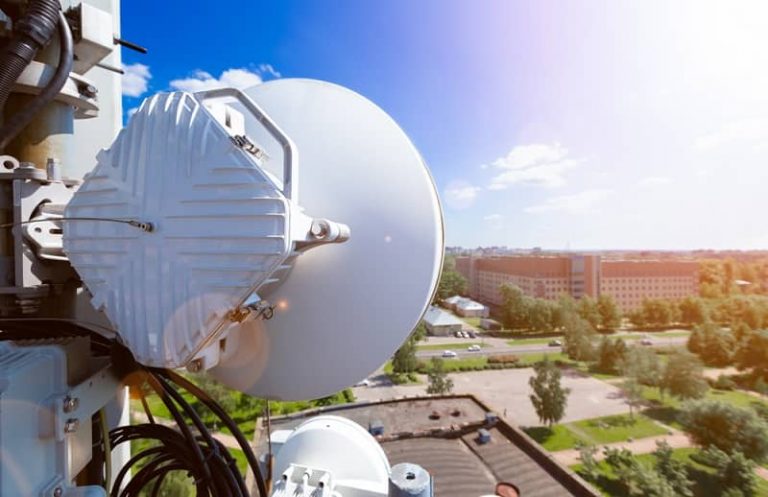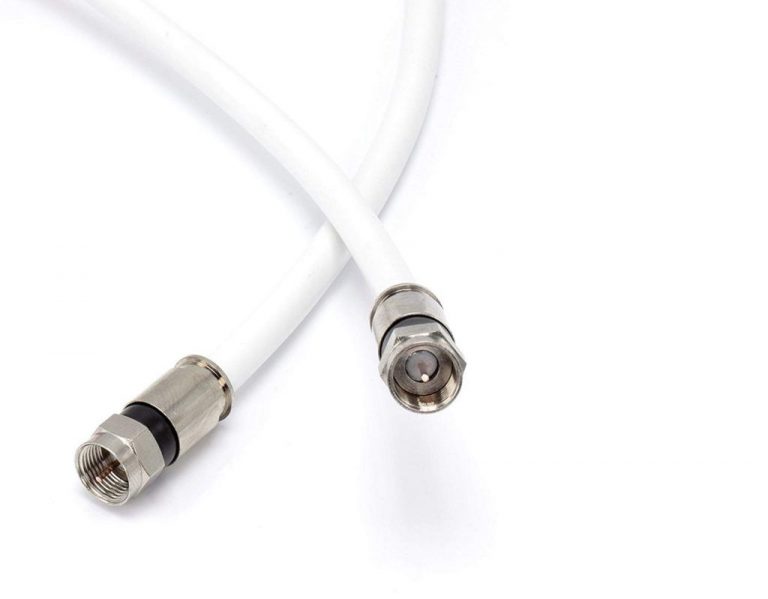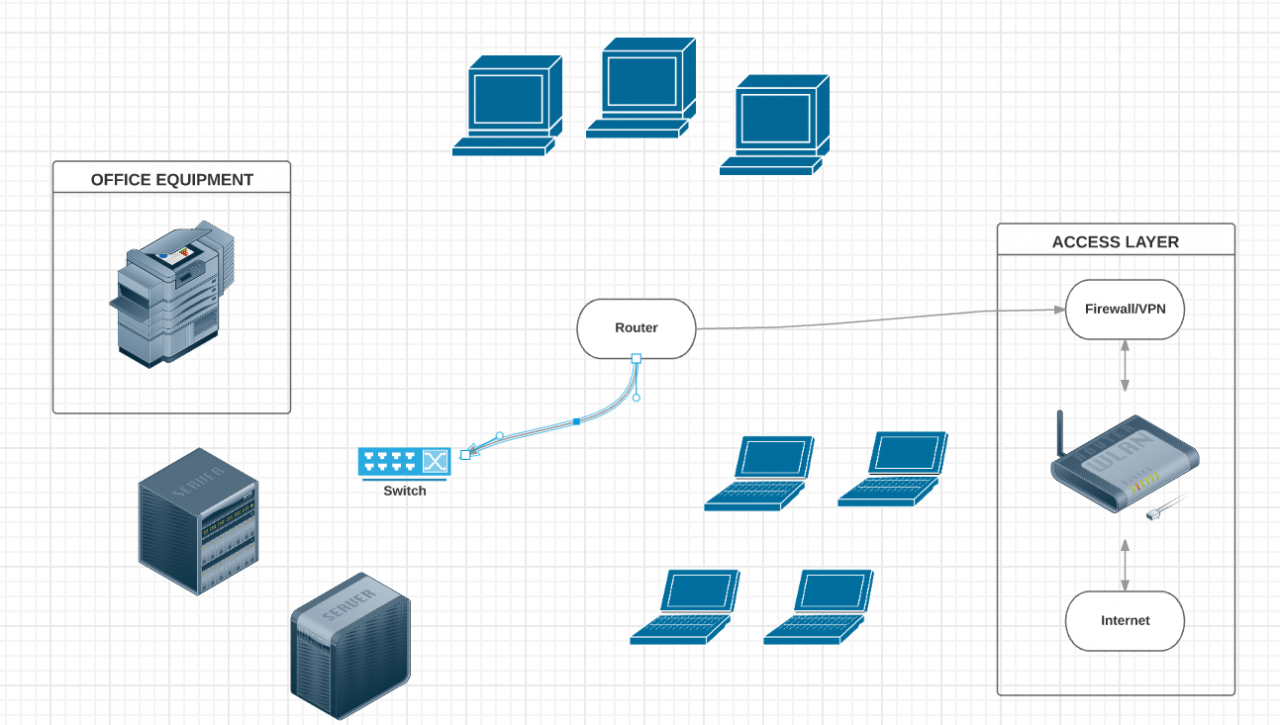In the world of network infrastructure, the choice between plenum and non-plenum coaxial cables represents more than a simple purchasing decision-it’s a critical compliance requirement that directly impacts building safety, network reliability, and legal liability. As building codes become increasingly stringent in 2025, understanding these differences is essential for network engineers, building managers, and IT professionals who must balance safety regulations with performance requirements and budget constraints.
Understanding Plenum Spaces and Their Critical Role
Plenum spaces are designated areas within buildings specifically designed to facilitate air circulation for heating, ventilation, and air conditioning (HVAC) systems. These spaces commonly exist:
- Above suspended ceilings
- Below raised floors
- Within air handling ducts
- In vertical risers between floors
What makes these spaces unique is their function in air movement and distribution throughout the building. During a fire incident, these spaces can rapidly circulate smoke, toxic gases, and flames throughout a facility, potentially turning a small, localized fire into a building-wide catastrophe within minutes.
“The rapid air movement in plenum spaces creates perfect conditions for accelerated flame spread and smoke distribution, making proper cable selection not just a code requirement, but a critical safety measure.” – NFPA Fire Protection Engineer
Regulatory Framework: 2025 Safety Standards
NFPA Standards and Compliance
The National Fire Protection Association (NFPA) maintains the primary standards governing plenum cable requirements in the United States. The current regulatory framework includes:
- NFPA 90A (2025 Edition): Standard for the Installation of Air Conditioning and Ventilating Systems, which mandates specific requirements for materials installed in plenum spaces
- NFPA 262: Standard Method of Test for Flame Travel and Smoke of Wires and Cables, which establishes the testing protocols
According to these standards, cables installed in plenum spaces must undergo rigorous testing to ensure they limit flame propagation and smoke production in fire scenarios.
UL Testing Protocols
Underwriters Laboratories (UL) implements specific testing methods to certify cable compliance:
| Test Standard | Testing Method | Passing Requirements |
|---|---|---|
| UL-910 (Steiner Tunnel) | 24′ cable samples exposed to 88kW flame with 240 ft/min airflow for 20 minutes | Flame spread <5 feet, Peak optical density ≤0.5, Average optical density ≤0.15 |
| UL-1666 (Riser) | Vertical flame test with specified heat | Flame spread <12 feet |
| UL-1581 | General wire and cable test | Various parameters tested |
For technical professionals seeking to validate specific cable ratings, the UL Online Certification Directory provides searchable access to all currently certified products.
Cable Construction: Engineering Differences
Plenum Cable Materials and Design
Plenum-rated coaxial cables (CMP designation) feature specialized construction elements:
- Jacket Material: Typically fluorinated ethylene polymer (FEP) or low-smoke polyvinyl chloride (PVC) variants
- Dielectric: Modified compositions that minimize toxic gas emissions
- Fire-Retardant Additives: Specialized compounds that inhibit flame propagation
- Enhanced Smoke Suppression: Chemical formulations that reduce smoke optical density
These materials significantly increase manufacturing complexity and cost, but provide essential safety characteristics during fire events.
Non-Plenum Cable Construction
Standard non-plenum cables (typically bearing CM, CMR, or CMG designations) utilize:
- Standard PVC Jacketing: More flexible but produces toxic gases when burned
- Conventional Dielectric Materials: Less expensive but potentially hazardous in fire conditions
- Limited or No Flame-Retardant Properties: May contribute to flame spread
- No Smoke Suppression Technology: Can generate dense, opaque smoke when burned
Performance Comparison Tables
Fire Safety Performance Metrics
| Parameter | Plenum (CMP) | Riser (CMR) | General Purpose (CM) |
|---|---|---|---|
| Flame Spread | <5 feet | <12 feet | No specific limit |
| Peak Smoke Density | ≤0.5 OD | ≤0.5-0.7 OD | No specific limit |
| Avg. Smoke Density | ≤0.15 OD | ≤0.15-0.3 OD | No specific limit |
| Toxic Gas Emissions | Minimal | Moderate | High |
| Self-Extinguishing | Yes | Partial | Limited |
Technical Signal Performance
| Parameter | Plenum (CMP) | Non-Plenum (CM/CMR) |
|---|---|---|
| Signal Attenuation | Comparable | Comparable |
| Bandwidth Capacity | Same as non-plenum | Same as plenum |
| RFI/EMI Shielding | Model dependent | Model dependent |
| Temperature Rating | -40° to +125°C (typical) | -20° to +75°C (typical) |
| Bend Radius | Slightly larger | Slightly smaller |
| Installation Flexibility | Less flexible | More flexible |
Note: Signal transmission characteristics are generally equivalent between plenum and non-plenum versions of the same cable type. The primary differences relate to fire safety performance, not electrical performance.
Commercial Building Requirements
When Plenum Cables Are Mandatory
Building codes explicitly require plenum-rated cables in:
- Any space used for environmental air handling
- Spaces between a ceiling and the floor/roof structure above when used as a return air plenum
- Vertical shafts when they connect multiple floors and serve as air plenums
- Raised floor environments when the underfloor space serves as an air plenum
# Simple decision algorithm for cable type selection
def select_cable_type(installation_location, building_type, local_codes):
if "plenum_space" in installation_location:
return "PLENUM_RATED_REQUIRED"
elif "riser" in installation_location:
return "RISER_OR_PLENUM_REQUIRED"
elif "conduit" in installation_location:
if conduit_is_plenum_rated:
return "STANDARD_CABLE_ACCEPTABLE"
else:
return check_local_codes(building_type, local_codes)
else:
return "STANDARD_CABLE_ACCEPTABLE"Documentation Requirements
When installing plenum cables, the following documentation should be maintained:
- Cable certification labels and specifications
- Installation date and installer credentials
- Test results verifying cable performance
- Verification of appropriate UL markings on cable jackets
- Inspection certificates when required by local authorities
For more detailed information on cable installation documentation, see our guide on Cable Installation Best Practices.
Technical Application Scenarios
Critical Applications for Plenum-Rated Cables
Plenum-rated coaxial cables are particularly important in:
Healthcare Facilities
Medical environments often have strict fire safety requirements due to limited mobility patients and critical care operations. In these settings, minimizing toxic gas emissions during a fire incident is particularly crucial.
Educational Institutions
Schools and universities typically have extensive plenum spaces and high occupancy loads, making proper cable specifications essential for safety compliance.
High-Rise Commercial Buildings
The stack effect in tall buildings can accelerate smoke and fire spread, making plenum-rated materials particularly important in vertical shafts and between floors.
Data Centers
Despite extensive fire suppression systems, the high cable density in modern data centers makes proper plenum rating essential for limiting potential fire spread.
For a comprehensive review of different coaxial cable types for specific applications, see our detailed guide on Types of Coaxial Cables and Their Applications.
Installation Best Practices
Proper Installation Techniques
When working with plenum-rated cables, follow these critical practices:
- Maintain Cable Integrity: Avoid excessive pulling force that could damage the specialized jacketing
- Use Compatible Components: Ensure all connectors, support hardware, and accessories are also plenum-rated
- Follow Bend Radius Guidelines: Plenum cables often have specific minimum bend radius requirements (typically 10× cable diameter)
- Secure Appropriately: Use approved cable ties or supports that won’t compromise the cable’s fire rating
- Label Thoroughly: Clearly identify all plenum-rated cables for future reference and inspection
For detailed cable installation instructions, refer to our Coaxial Cable Installation Guide.
Cost Analysis and ROI Considerations
Understanding the Price Premium
Plenum-rated coaxial cables typically cost 2-3 times more than their non-plenum counterparts due to:
- Specialized materials with higher raw material costs
- More complex manufacturing processes
- Rigorous testing and certification requirements
- Lower production volumes for specialized ratings
However, this cost differential must be weighed against:
- Potential liability costs of non-compliant installations
- Insurance implications and potential premium increases
- Costs of failed inspections and required reinstallation
- Business interruption risks from fire incidents
Making Cost-Effective Decisions
To optimize cable specification decisions:
- Map Plenum Spaces Carefully: Only use plenum cable where actually required
- Consider Conduit Options: In some jurisdictions, non-plenum cable in plenum-rated conduit may be acceptable
- Review Local Code Interpretations: Some local authorities have specific rulings on borderline cases
- Evaluate Total Project Impact: Calculate costs based on total installation, not just materials
Future Trends in Cable Safety Technology
Emerging Innovations
The cable industry continues to evolve with significant developments in safety technology:
- Non-Halogen Plenum Compounds: Addressing toxicity concerns with some FEP and related fluorochemicals
- Polyolefin-Based Alternatives: New formulations based on polyethylene showing promise as alternatives
- Advanced Flame-Retardant Synergist Packages: Creating more effective protection with fewer environmental concerns
- Smart Cable Monitoring: Integration with building safety systems for real-time condition monitoring
These innovations aim to maintain or exceed current safety standards while addressing environmental and health concerns related to some traditional plenum cable materials.
Practical Decision Guide
When determining whether plenum-rated cable is required for your project, follow this simplified decision path:
- Identify Installation Environment: Determine if any portion of the cable run passes through designated plenum spaces
- Consult Building Plans: Review architectural drawings showing HVAC return paths
- Check Local Code Requirements: Some jurisdictions have stricter requirements than national standards
- Consult with Building Officials: When in doubt, get official determination before installation
- Document Decisions: Maintain records of all determinations for inspection and compliance purposes
For more detailed guidance on network cable selection and installation, see our guide on Network Cable Selection Criteria.
Conclusion: Balancing Safety, Compliance, and Performance
The distinction between plenum and non-plenum coaxial cables represents a critical decision point for network infrastructure professionals. While the technical signal performance remains largely equivalent between these cable types, the safety implications in fire scenarios are profound.
In commercial environments, the decision is often made by building codes rather than preference-if cables traverse plenum spaces, plenum-rated cables are mandatory. The significant price premium for plenum cables might tempt some to cut corners, but the potential consequences-from failed inspections to catastrophic fire events-make compliance the only reasonable approach.
For professional network engineers, understanding both the technical requirements and the underlying safety principles ensures installations that protect both infrastructure investments and, more importantly, human lives. As building technologies and safety standards continue to evolve, staying current with these specifications remains an essential professional responsibility.
For testing and verification of your cable installations, consider reviewing our guide on Cable Signal Testing to ensure your network performs optimally while meeting all safety requirements.






